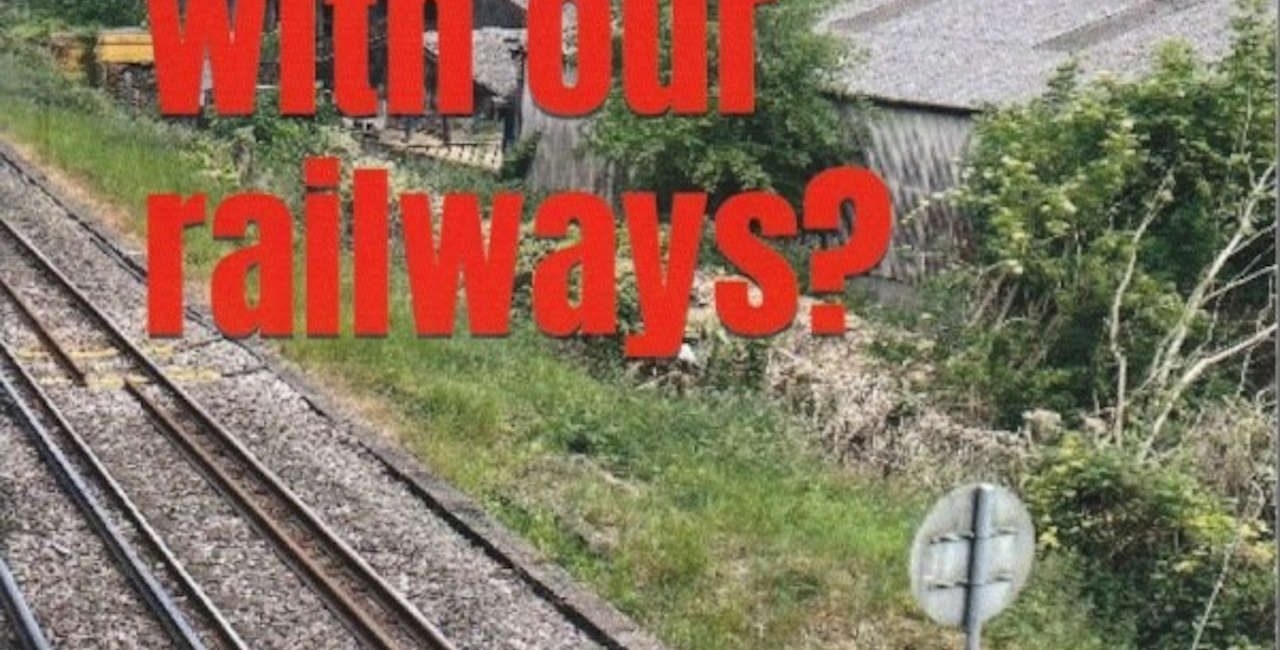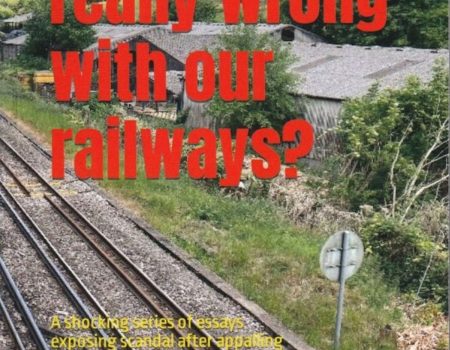This book should be on every transport minister’s desk, with its host of examples of the inefficiencies, mistakes, and wastefulness on an extravagant scale that are so prevalent on today’s railways and with little thought about the consequences.
Throughout the book, Benedict le Vay highlights incidents where something went wrong, why crashes happened, and why unbelievably stupid decisions were approved.
The errors and blunders continue, such as the billion-pound blunder that is HS2, designed to carry fewer passengers than the current London to Birmingham line and will deposit its passengers a 15-minute walk from Birmingham’s main station at New Street.
Published and written by Benedict le Vay in August 2022, this soft-cover book measures around 15.2 cm x 22.9 cm, and has 174 pages and 116 black-and-white photographs.
At the time of writing, it can be purchased for £9.80 from Amazon.
In a brief introduction, the author takes a balanced view that, despite the book’s title, there is much to commend Britain’s railways today.
The 13 chapters provide plenty of food for thought, with titles including: Seventy years of appalling decision making; From grovelling in filth to the creation of a genius design: Another monumental cockup: The project from Hell (and that’s official!); The weird world of SNP rail, What does all this mean for nationalisation? The scandal of the bungled Railtrack rail privatisation and its tragic legacy.
Accidents caused by the rail industry. Scandal: the £60m disaster caused by a lack of a 50p part. HS2B or not 2b do we need this £100 billion new line? The useless, arrogant train companies should learn how to react commercially to what passengers actually want. Trade unions – must be they be crushed for the good of the railway’s future? Endless train announcements: See it, say it, stuff it! The cost of rail projects: from eye watering to ludicrous. Public v private: And the winner is …
Finally, in Part 2, the author considers what he believes to be right with our railways by relating many humorous but all-too-real anecdotes.
The pages below are from the chapter “Accidents caused by the rail industry,” where the author cogently argues that the accident was the rail industry’s fault for allowing vegetation in a cutting to grow unchecked so that in the leaf-fall season leaves from trees at the side of the line fell onto the tracks and caused trains passing over them to lose adhesion.

Chapter 7 describes how an accident was caused by the absence of a washer costing 50p, but ultimately was the fault of the responsible individuals becoming over-familiar with warning signals.
The cause of the accident was a missing washer from a brake regulator valve, but escalated because of a missing maintenance manual, neglecting to investigate a screeching noise, lack of observation of CCTV, and ignoring an alarm from a lineside heat detector.
Reading the chapter it beggars belief that so few accidents occur on Britain’s railways.

Inevitably, any book looking at what’s wrong with our railways will include a reference to trade unions. In Chapter 11, the author takes the view that in one respect, they are essential, but their continual confrontations with the train operators and the government should take a different approach.

If anyone has reached Chapter 12, “The cost of rail projects: from eye watering to ludicrous”, without becoming frustrated, they surely will in its half-dozen pages. The left-hand page below shows the part of London’s Waterloo station used by Eurostar trains before St. Pancras International station opened.
For the next 12 years, this part of Waterloo was unused, despite the rest of the station being inadequate and overcrowded.
On the right is a train on the branch to Marchwood near Southampton on a trial run to find out if the branch could be reopened for passenger services.
The line is regularly used by freight trains and the station at Marchwood is still standing, but the cost to reopen the line for passenger services has been quoted as a staggering £40 million.

Throughout this book, the author exposes many examples of inefficiencies, inept management, and an unconcern for taxpayers’ money.
If something could be built for £1 million, lack of control often resulted in it costing many millions more, or in the case of HS2, many billions more. No one is held accountable when a few extra noughts are added to already over-engineered and outlandishly expensive Government projects.
The author’s years of journalism show through with his wide-ranging choice of chapters, from the bungled privatisation of British Rail, the lack of foresight into the construction of HS2, and even the relentless banal announcements that accompany every train journey, even before passengers board their train.
The book is let down somewhat by often poor reproduction of the photographs, many of which are too small to be of any use, and all are in black-and-white.
Those are minor criticisms, and overall the book is an enthralling read that anyone with the slightest interest in railways will thoroughly enjoy, and deserves a rating of 4.5/5.
The book is available to purchase from Amazon.
We would like to thank Benedict le Vay for providing us with a copy of the book for review.








No Comment! Be the first one.